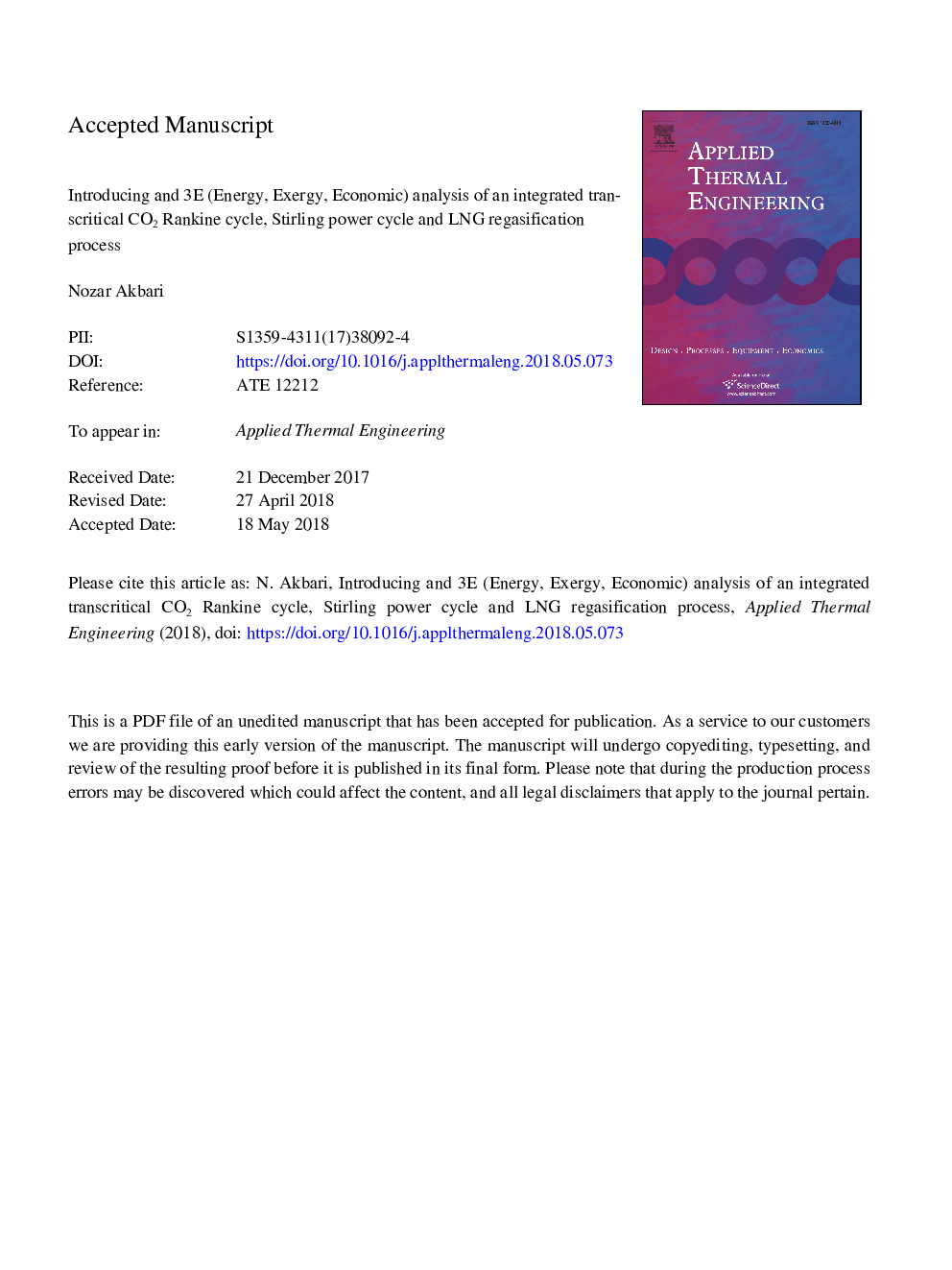| Article ID | Journal | Published Year | Pages | File Type |
|---|---|---|---|---|
| 7045080 | Applied Thermal Engineering | 2018 | 51 Pages |
Abstract
In this study an integrated transcritical carbon dioxide Rankine cycle, Stirling power cycle and liquefied natural gas (LNG) regasification process has been introduced and analyzed. This type of integration is rare among recent proposed thermodynamic cycles. For comprehensive investigation of the system energy, exergy and exergoeconomic (3E) analyses have been performed on the process. The overall energy and exergy efficiencies of the process are 37.45% and 64.26%, respectively. These values are brilliant for integration between Stirling and other power cycles. In this process H-2 with 47,394 (kW) and H-1 with 35,847 (kW) exergy destruction rate, have the highest quantities among other components of the process. In this process pump (P-2) and compressor (CR) have the highest and lowest relative cost difference value, respectively. The overall exergoeconomic factor of the process is 81.36% which means impact of capital investment and O&M cost rate of the process components is dominant over exergy destruction cost rate. In the final stage of the process analysis, parametric study has been carried out. Decision variables are compressor pressure ratio and transcritical Rankine cycle turbine inlet temperature, while maximization of the process exergy efficiency and minimization of total product cost per exergy unit, are intended objective functions.
Related Topics
Physical Sciences and Engineering
Chemical Engineering
Fluid Flow and Transfer Processes
Authors
Nozar Akbari,
